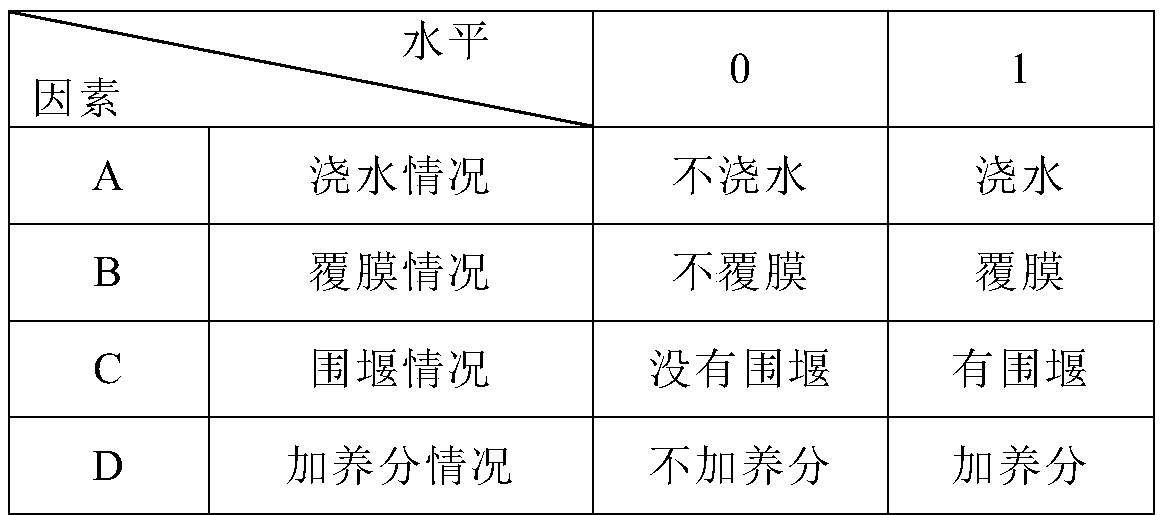Method for restoring degraded grassland ecosystem by establishing Leymus chinensis
A technology for Leymus chinensis and seeds, which is applied in the fields of botanical equipment and methods, land preparation methods, planting substrates, etc., can solve the problems of successful planting of Leymus chinensis natural grassland, low seed germination rate and low seedling survival rate, water shortage in stages, etc. To achieve the effect of reducing labor required for water and fertilizer management, reducing water evaporation, and increasing grassland biomass
- Summary
- Abstract
- Description
- Claims
- Application Information
AI Technical Summary
Problems solved by technology
Method used
Image
Examples
Embodiment 1
[0035] Embodiment 1 builds the method for planting Leymus chinensis
[0036] (1) Selection of planting points: According to the restoration plan, one planting point can be established every 10m×10m in the area to be restored;
[0037] (2) Preparation of nutrient soil: At the planting point, dig a round pit with a diameter of 30cm and a depth of 30cm, take 80-90% of the excavated soil, add 12g of slow-release urea, 2g of diammonium phosphate, and 500g of decomposed Cow dung or sheep dung, fully mixed and then backfilled into the pit;
[0038] (3) Preparation of cofferdam soil: take 10-20% of the excavated soil, add 100g of pregelatinized starch, fully mix and add appropriate amount of water to make mud;
[0039] (4) Seed preparation: Soak the collected Leymus chinensis seeds in 3% potassium permanganate aqueous solution for 10-15 minutes, scoop out the seeds, wash them three times with clean water, drain them until there are no obvious water drops, and place them in -15-18°C ...
Embodiment 2
[0043] Embodiment 2 Verification of the planting method of the present invention
[0044] In order to verify the beneficial effect of the planting method of the present invention, the inventor designed an orthogonal experiment with four factors and two levels, as shown in Table 1.
[0045] Table 1 Orthogonal experiment table
[0046]
[0047] Orthogonal experiment results are shown in Table 2.
PUM
 Login to View More
Login to View More Abstract
Description
Claims
Application Information
 Login to View More
Login to View More - R&D
- Intellectual Property
- Life Sciences
- Materials
- Tech Scout
- Unparalleled Data Quality
- Higher Quality Content
- 60% Fewer Hallucinations
Browse by: Latest US Patents, China's latest patents, Technical Efficacy Thesaurus, Application Domain, Technology Topic, Popular Technical Reports.
© 2025 PatSnap. All rights reserved.Legal|Privacy policy|Modern Slavery Act Transparency Statement|Sitemap|About US| Contact US: help@patsnap.com



